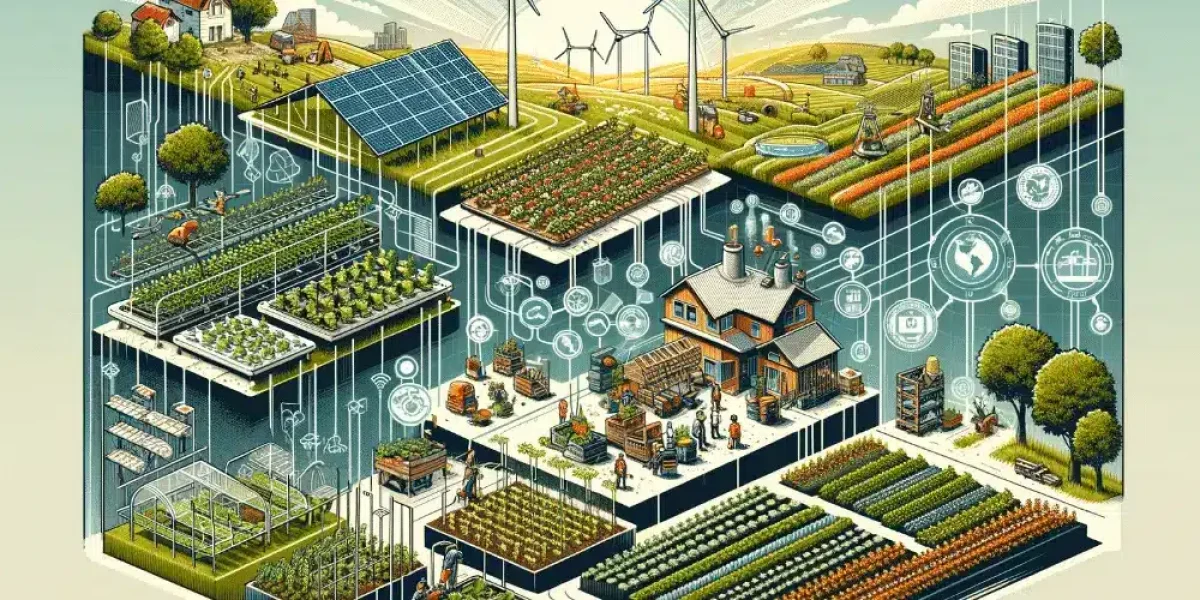By: John Gessin
Sustainability has become the buzzword of the century, and rightly so. With the growing awareness of climate change and its devastating effects on our planet, as emphasized by environmental consultant John Gessin, industries around the world are under immense pressure to shift toward more sustainable practices. Among these, agriculture stands out as a sector with tremendous potential for positive change. In this article, we delve into the future of sustainable agriculture, exploring innovative practices and technologies that are paving the way for a greener and more food-secure world.
Sustainability and Agriculture: A Crucial Partnership
Agriculture has always been at the forefront of human civilization. It is the backbone of our food supply, the source of livelihood for millions, and a major contributor to the global economy. However, the traditional practices of farming, with their heavy reliance on chemical inputs and excessive resource consumption, have taken a toll on the environment. The need for a shift towards sustainable agriculture has never been more urgent.
The Farm of Tomorrow: Sustainable Practices
- Precision Farming: Precision agriculture uses technology to optimize farming practices, resulting in increased productivity and reduced environmental impact. GPS-guided machinery, soil sensors, and drones are utilized to monitor and manage crops more efficiently. These technologies allow farmers to apply resources such as water and fertilizer precisely where and when they are needed, minimizing waste and runoff.
- Agroforestry: This practice combines trees and crops on the same piece of land, offering numerous benefits. Trees provide shade, reduce soil erosion, and contribute to carbon sequestration. They also improve soil health and provide habitat for beneficial insects. In return, crops can provide a source of income for farmers.
- Cover Cropping: Cover cropping involves planting specific crops during off-seasons to protect and enrich the soil. These cover crops prevent erosion, suppress weeds, and enhance soil fertility. Legumes like clover also fix nitrogen, reducing the need for synthetic fertilizers.
- Crop Rotation: Crop rotation is a time-honored practice that helps break pest and disease cycles naturally. By rotating crops, farmers can maintain soil health and reduce the need for chemical pesticides.
- Organic Farming: Organic farming is becoming increasingly popular as consumers demand pesticide-free produce. This method relies on natural processes and biological controls to manage pests and diseases.
Technological Advancements in Sustainable Agriculture
The integration of technology into agriculture is a game-changer. High-tech solutions are improving efficiency and sustainability in various ways:
- Vertical Farming: Pop culture enthusiasts might recall that vertical farming made a cameo in the movie “The Martian.” In reality, this innovative approach to farming involves growing crops in stacked layers indoors, using artificial light and precise environmental controls. It not only saves space but also reduces water usage and minimizes the need for pesticides.
- Aquaponics and Hydroponics: These soil-less farming techniques are gaining popularity. Aquaponics combines aquaculture (fish farming) and hydroponics (growing plants in nutrient-rich water). The waste from the fish provides nutrients for the plants, and the plants help filter the water for the fish. It’s a symbiotic system that’s highly resource-efficient.
- Blockchain in Agriculture: Blockchain technology is being used to track the origin and journey of food products from farm to fork. This transparency assures consumers of the authenticity and sustainability of their food.
- AI and Data Analytics: Artificial intelligence and data analytics are helping farmers make data-driven decisions. Predictive algorithms can forecast weather patterns, crop yields, and even disease outbreaks, enabling farmers to take proactive measures.
Challenges and the Path Forward
While sustainable agriculture is on the rise, it’s not without its challenges. Farmers often face resistance to change due to the costs and learning curve associated with new practices and technologies. Access to funding and education is crucial in helping them make the transition. Additionally, raising awareness among consumers about the benefits of sustainable agriculture and the importance of supporting eco-friendly practices is essential.
The Role of Consumers
In pop culture, we often see heroes who champion causes, fight for justice, and make the world a better place. In the case of sustainable agriculture, consumers have the power to be those heroes. By making conscious choices at the grocery store, supporting local farmers, and demanding sustainably sourced products, individuals can drive change in the industry. Our purchasing decisions send a clear message to the market: we want a greener, more sustainable future.
Conclusion
The future of sustainable agriculture is promising, thanks to innovative practices and technological advancements that prioritize environmental stewardship and food security. As we navigate the challenges of climate change and resource scarcity, sustainable agriculture emerges as a beacon of hope, offering a path to nourishing our growing global population while safeguarding the planet. It’s a future where farms are not only places of productivity but also guardians of our precious natural resources. By embracing these innovations and practices, we can indeed be the heroes in our own sustainable agriculture story, shaping a brighter future for generations to come.










